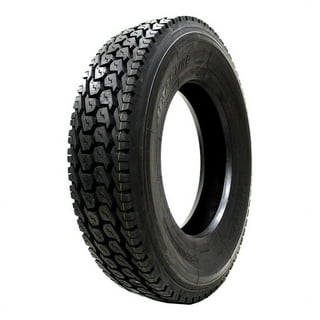Tire Solution: The Influence of Weather
When it pertains to guaranteeing optimum efficiency and safety and security on the roadway, recognizing the influence of weather problems on tire solution is essential. From scorching warm to icy roadways, each weather aspect can substantially influence tire capability and total driving experience. By delving right into the results of varying weather on tires, drivers can gain beneficial insights that may improve their automobile's efficiency and durability. In this discussion, we will certainly check out the intricate partnership in between climate problems and tire service, clarifying the relevance of weather-specific tire maintenance practices and factors to consider.
Warmth and Tire Efficiency
When subjected to high temperature levels, tires experience adjustments in efficiency that can considerably influence vehicle safety and handling. The warm generated from long term driving or hot weather condition conditions triggers the tire rubber to soften, leading to minimized walk life and boosted wear.
Furthermore, high temperature levels can accelerate the procedure of tire aging, creating the rubber to degrade a lot more quickly. To reduce the results of heat on tire performance, motorists should frequently examine their tire stress, revolve tires to make sure even use, and examine for any kind of indications of damage.
Cold Climate Effects
Winter conditions can have a significant influence on tire performance and safety and security. As temperatures decline, tire rubber can harden, bring about decreased grip on icy or snow-covered roadways. In cool climate, tires may likewise lose atmospheric pressure much more quickly, which can affect taking care of and gas effectiveness. Furthermore, cool temperatures can cause tire sidewalls to stiffen, enhancing the risk of damage from pockets or various other road threats.
To minimize the results of cool weather condition on tires, it is essential to on a regular basis inspect tire stress and inflate them to the producer's advised levels. Using winter months or all-season tires designed for chilly weather condition problems can likewise boost grip and grasp on icy or snowy roadways - discount tires morris il. Proper tire maintenance, including routine examinations for wear and damage, becomes even a lot more crucial during colder months to guarantee optimal efficiency and safety and security
Rainy Issues Influence
Tires with worn-out footsteps are a lot more susceptible to hydroplaning, where a layer of water constructs up between the tire and the roadway surface area, leading to loss of grip. To battle this, motorists ought to consistently check their tires for adequate walk depth and take into consideration investing in tires especially made for wet conditions.

Snow and Tire Safety
Snow-covered roads position distinct challenges for vehicle drivers, stressing the importance of correct tire option and maintenance. When driving in snowy conditions, having the right tires can make a significant distinction in safety and security and efficiency. Wintertime tires are created with unique rubber compounds and tread patterns to offer better traction on snow and ice compared to all-season tires. The much deeper footsteps look what i found and sipes of winter tires assist grip the roadway better, decreasing the danger of sliding and sliding.
Along with utilizing wintertime tires, it is crucial to ensure they are appropriately inflated. Cold weather can cause tire pressure to drop, impacting traction and handling (mopar tire service specials). Regularly checking and preserving the appropriate tire stress is essential for ideal efficiency in snowy problems

Weather-Related Tire Upkeep
Weather-related tire upkeep encompasses a range of techniques intended at ensuring optimum tire feature and durability in various weather condition scenarios. One key element of weather-related tire upkeep is tire pressure policy. Checking tire tread regularly and replacing tires when step wear reaches a specific deepness is important for maintaining traction and security in damaging weather.
Conclusion
In final thought, weather have a significant influence on tire efficiency and safety and security. From warmth influencing tire stress and put on to cool weather lowering grip, it is important to take into consideration the climate when keeping and utilizing tires. Wet problems can reduce grasp and bring about hydroplaning, while snow can increase the risk of mishaps if tires are not appropriately outfitted. Weather-related tire upkeep is important in making certain ideal efficiency and security on the roads.
In this discussion, we will certainly discover the complex partnership between weather condition conditions and tire service, dropping light on the relevance of weather-specific tire upkeep techniques and factors to consider.
